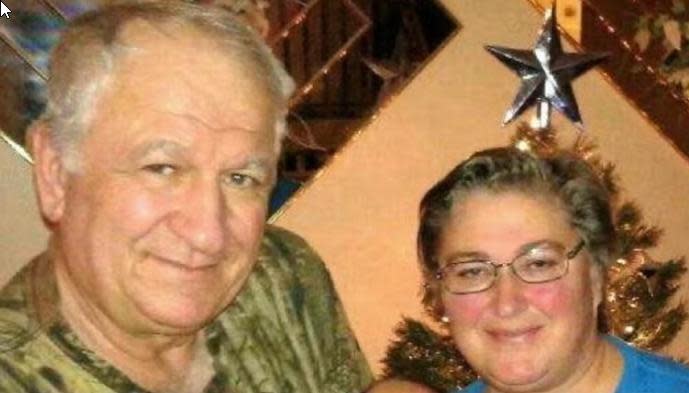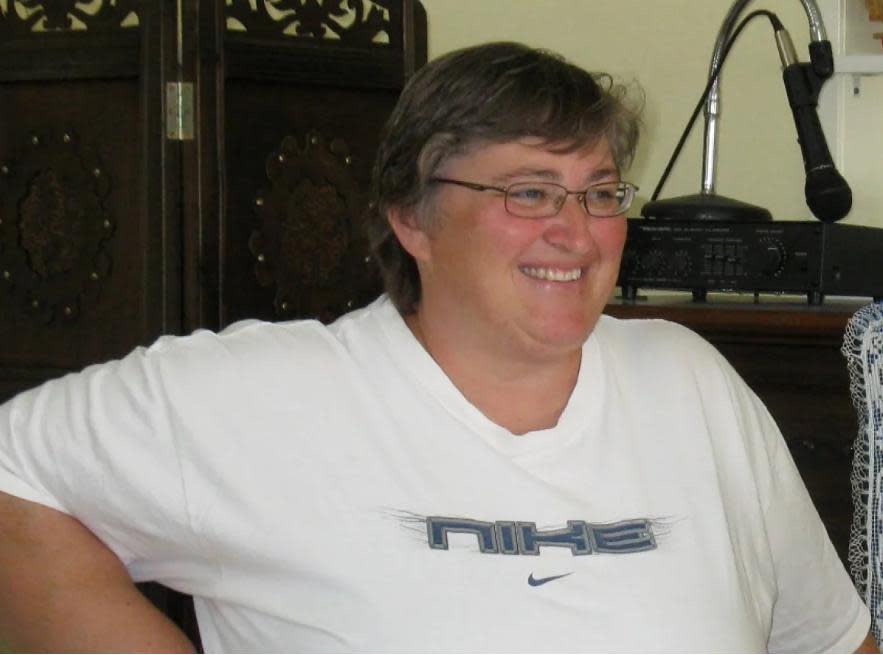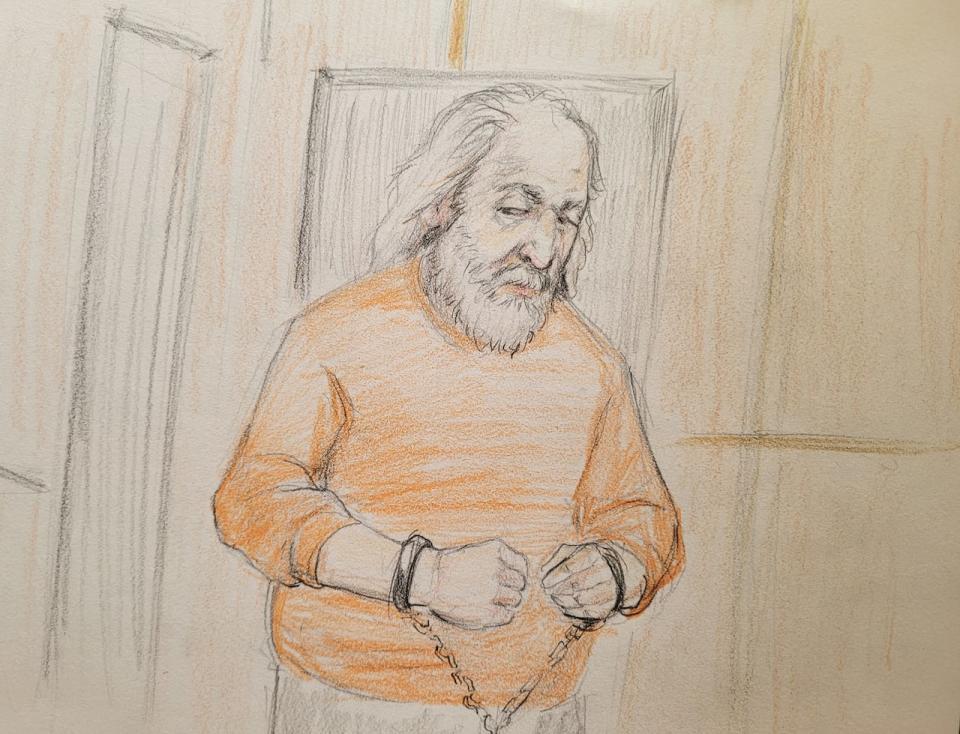Greg Fertuck found guilty of 1st-degree murder in 2015 disappearance of wife Sheree

Greg Fertuck is guilty of first-degree murder in the disappearance of his estranged wife more than eight years ago.
Sheree Fertuck, a 51-year-old mother of three, vanished on Dec. 7, 2015. She was last seen leaving her mother's farm near Kenaston just after 1 p.m. CST that day, en route to a gravel pit where she worked.
On Friday, 3,113 days later, Justice Richard Danyliuk ruled that Fertuck went out to the gravel pit that afternoon of Dec. 7, got into a confrontation with Sheree, shot her twice, then loaded her body in his truck and dumped her in a rural area.
This is the scenario that Greg presented to undercover police posing as criminals in a sting operation years after Sheree disappeared. He later recanted that story, saying that he made it up because he was enticed by money and perks from the fictitious criminal organization the officers were pretending to be a part of.
Sheree's body has never been found.
In his decision, Danyliuk said prosecutors Cory Bliss and Carla Dewar proved the elements for a first-degree murder conviction. Fertuck could have been found guilty of second-degree murder or manslaughter, or acquitted.
Bliss said that Fertuck had a plan to kill Sheree when he drove to the isolated gravel pit to confront her, equipped with a loaded, unregistered gun, gloves and thick plastic.
An early suspect
Police were interested in Greg as a suspect within days of his wife's disappearance. He and Sheree were involved in a contentious family law proceeding, involving divorce and property division.
At the time of her disappearance, Fertuck owed Sheree thousands of dollars in child support, couldn't access his large pension without her permission and was in financial distress, with accounts "consistently in overdraft."

Greg Fertuck ended up representing himself at his first-degree murder trial. (Greg Fertuck/Facebook)
Fertuck's cellphone records placed him at the gravel pit around the time of Sheree's disappearance. Police also discovered a spot of Sheree's blood in the back of his truck.
In October 2017, Greg admitted to police that he had been at the gravel pit that afternoon, but insisted he didn't see Sheree.
This wasn't enough for police to arrest him for murder. But it was enough for police to launch a sophisticated undercover operation.
Project Fisten
Officers launched the undercover sting against Fertuck in 2018. They roped him into a fictitious blue-collar organization where Fertuck worked — and formed friendships — with undercover officers.
This group was meant to look like it operated in illegal circles and give Fertuck the impression it had connections that could help people get away with crimes.
The officers ran 136 separate "scenarios" over nine months, building toward manoeuvring Fertuck into disclosing what happened the day Sheree disappeared.

Sheree Fertuck's body has never been found. (Submitted by Johanna Branigan)
The sting had its share of hiccups.
On Jan. 1, 2019, six months into the operation, Fertuck slipped on a patch of ice outside a bar and smashed the back of his head. He was eventually hospitalized for a month with a brain bleed.
Undercover police later testified that the sting went into "maintenance mode" as they assessed whether it could continue.
On Feb. 16, 2019, police noted that Fertuck had quit drinking and his mobility was good. Fertuck still knew the "gang" members but forgot details about the work.
Police concluded the sting could proceed.
The sting operation reached its climax in June 2019. Plainclothes police began to tail Fertuck. They let him know he was still a suspect in Sheree's disappearance.
The Crown says undercover officers encouraged Greg to tell the "truth" to the organization's boss, because he and his guys had the power to make problems like this go away for good.
On June 21, in a secretly recorded video, Fertuck showed undercover police how he killed Sheree, using a walking stick as a prop rifle in the demonstration, with one of the officers standing in as Sheree.
"I'm going to get something for you," Fertuck is heard saying on the tape, which was played in court.
He then described how he retrieved his .22-calibre semi-automatic rifle from his truck while the couple argued.
In the recording, Fertuck says he shot Sheree in the right shoulder and she dropped to her knees. The officer standing in as Sheree in the re-enactment then kneels in front of Fertuck after pretending to be shot.
"She says 'Oh my God.' Then I went behind her and shot her in the back of the head. She fell face down," Fertuck says on the tape, standing behind the officer.
He was arrested for Sheree's murder on June 24, three days after the confession.
The trial
The judge-alone murder trial before Justice Richard Danyliuk began at Saskatoon's Court of King's Bench (then called Court of Queen's Bench) in September 2021.
The trial moved ahead in fits and starts, delayed several times for various reasons, including COVID-19 and the discovery of the alleged murder weapon.

This tactical Ruger 10/22 was discovered by a family in a rural area west of Saskatoon in November 2021. Experts have linked it to shell casings found at the gravel pit where Sheree Fertuck is believed to have been killed. (Kendall Latimer/CBC)
Fertuck began representing himself in court after his lawyers withdrew from the case in October 2022. He had complained about them to the Law Society of Saskatchewan, without telling them.
In September 2023, Justice Danyliuk ruled that the evidence from the undercover police sting, including Fertuck's admission that he killed Sheree, could be admitted as evidence in the trial.
In his closing arguments, Fertuck said he had no reason to harm Sheree and suggested the judge consider others who may have. He noted that some of Sheree's work equipment had been vandalized before her disappearance.
Fertuck said he lied to the officers about killing Sheree because he was enticed by money and perks that came along with the fictitious criminal organization.

A sketch of Greg Fertuck appearing in Court of King's Bench in Saskatoon on Feb. 20, 2024. (Kyle Martin/Kyle Martin Designs)
The final lap
On June 3 — 11 days before the scheduled decision — Fertuck applied to re-open the trial to call a firearms expert, and also applied for a mistrial.
Fertuck said he had seen a news story in May about a national ballistics laboratory opening at the Saskatoon police building. He said that he wanted someone at the lab to analyze the rifle that the Crown believes was used to shoot Sheree. Fertuck said there should be more rust on the rifle, given that it supposedly spent six years hidden underneath a granary.
When he appeared before Danyliuk on June 10, Fertuck dropped the application for a mistrial. Then he tried to drop the proposal to bring a new firearms expert when he learned the new lab did not do work for private individuals, and that its staff is not trained to analyze rust on metal.
On Wednesday, Danyliuk formally rejected both applications in a 26-page fiat that described them as "ill-conceived and without legal foundation," paving the way for Friday's decision.
Sheree Fertuck's disappearance, the ensuing investigation and Greg Fertuck's trial are the focus of the CBC podcast The Pit. Listen to all the episodes here.


